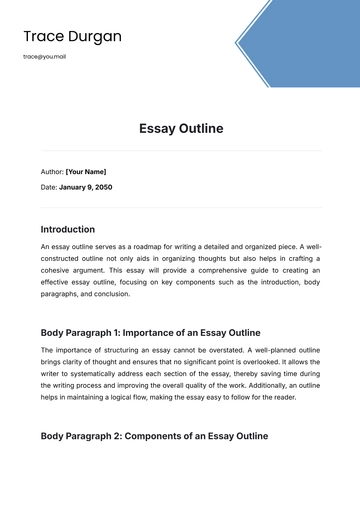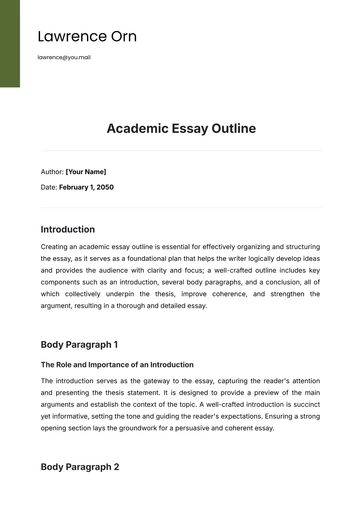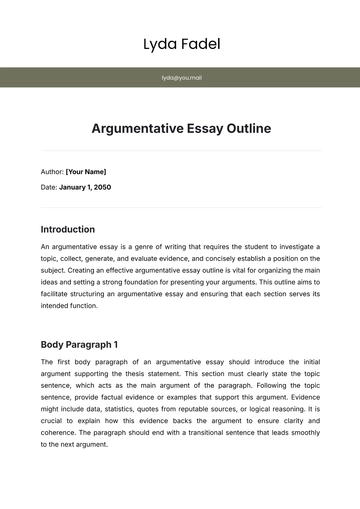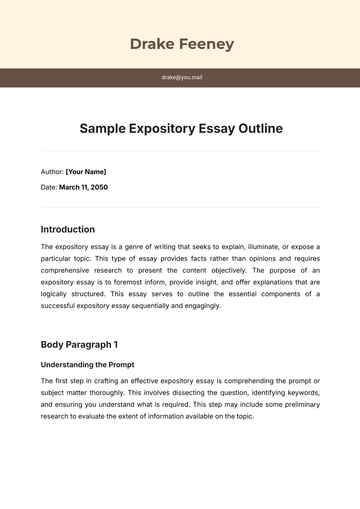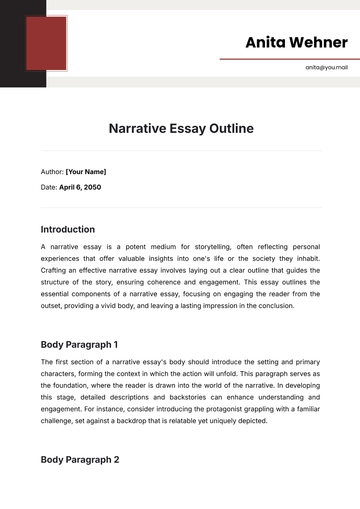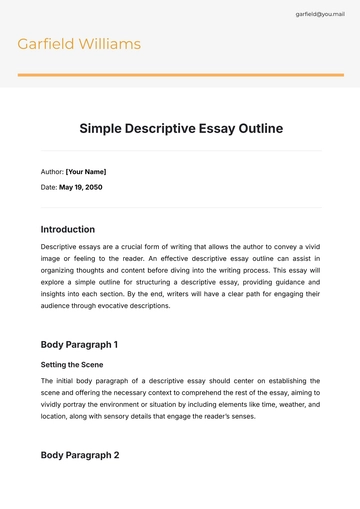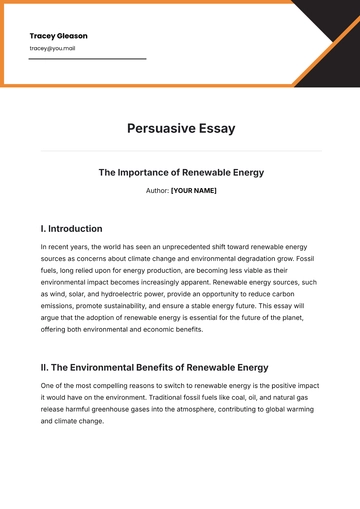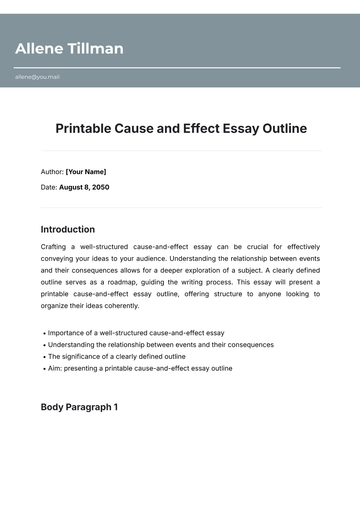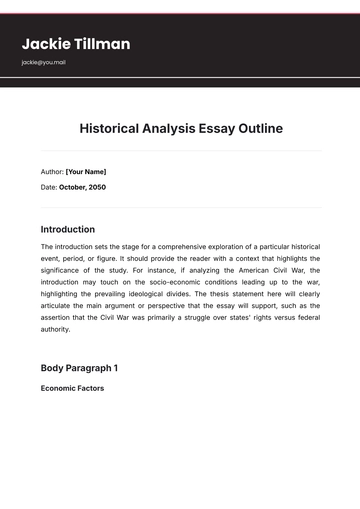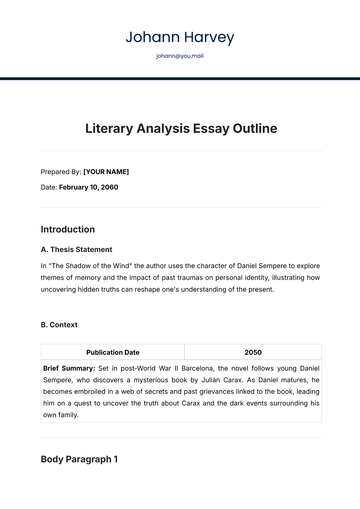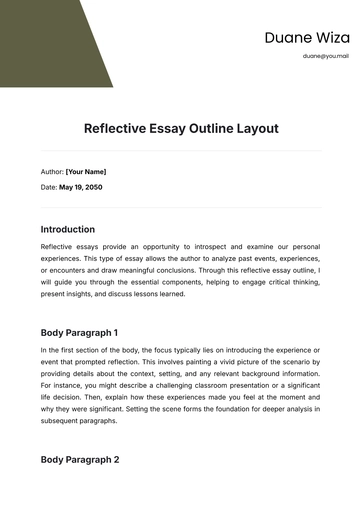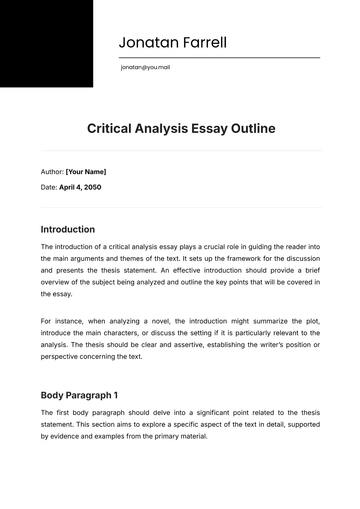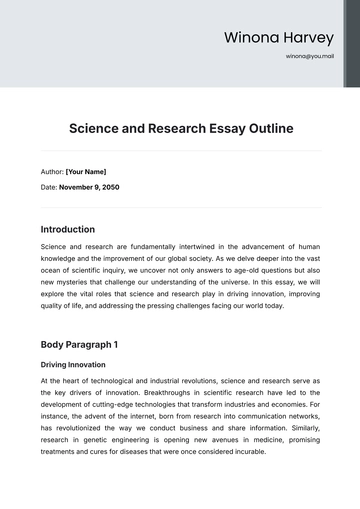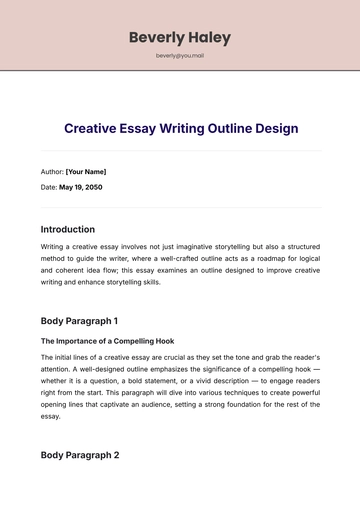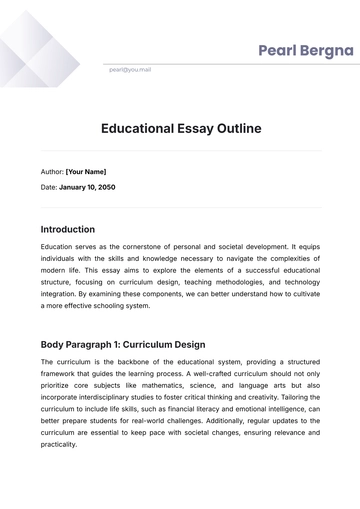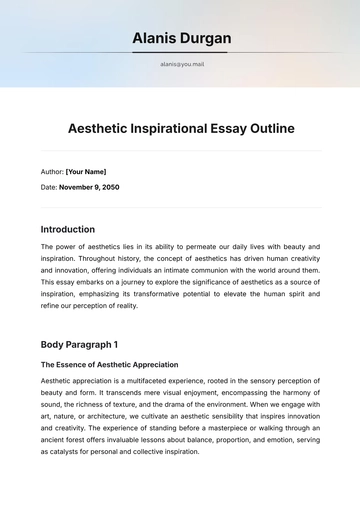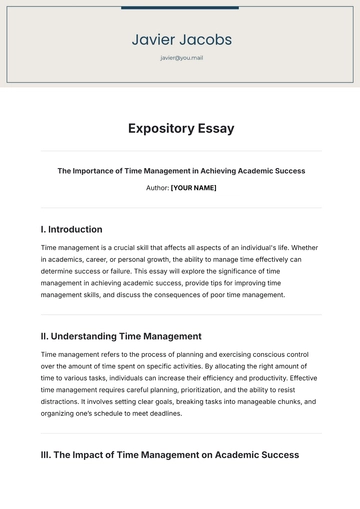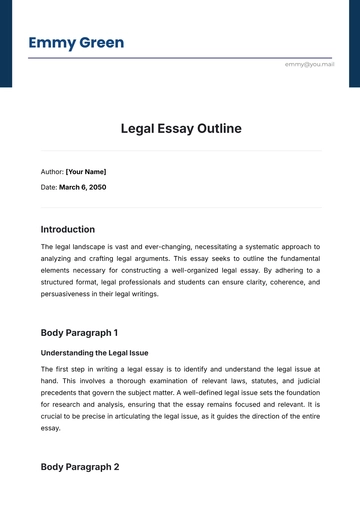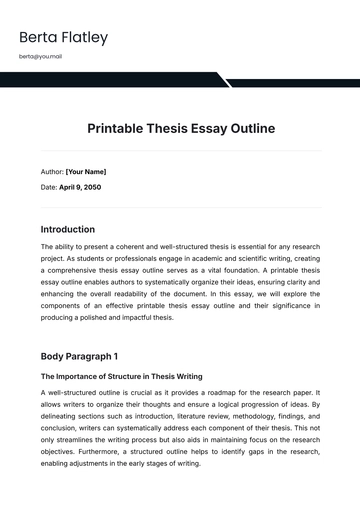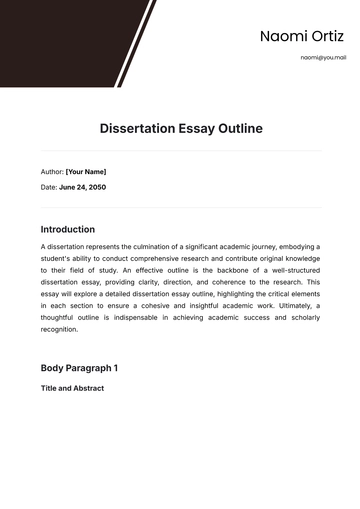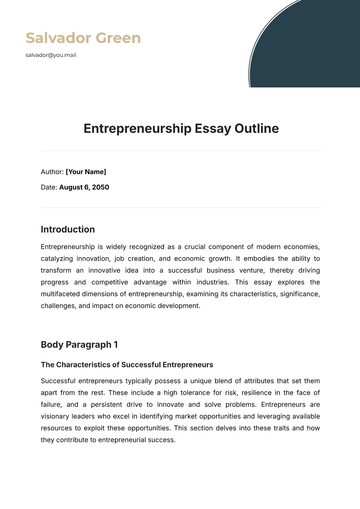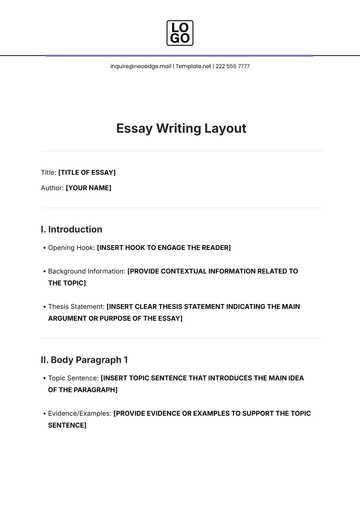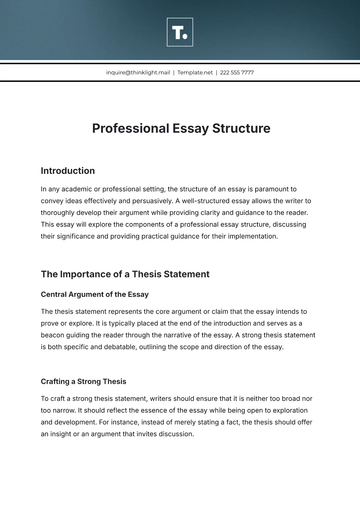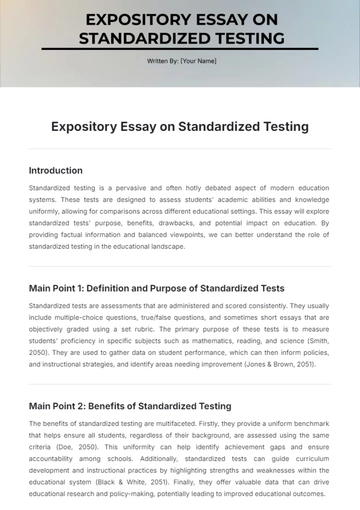Free Professional Essay Structure
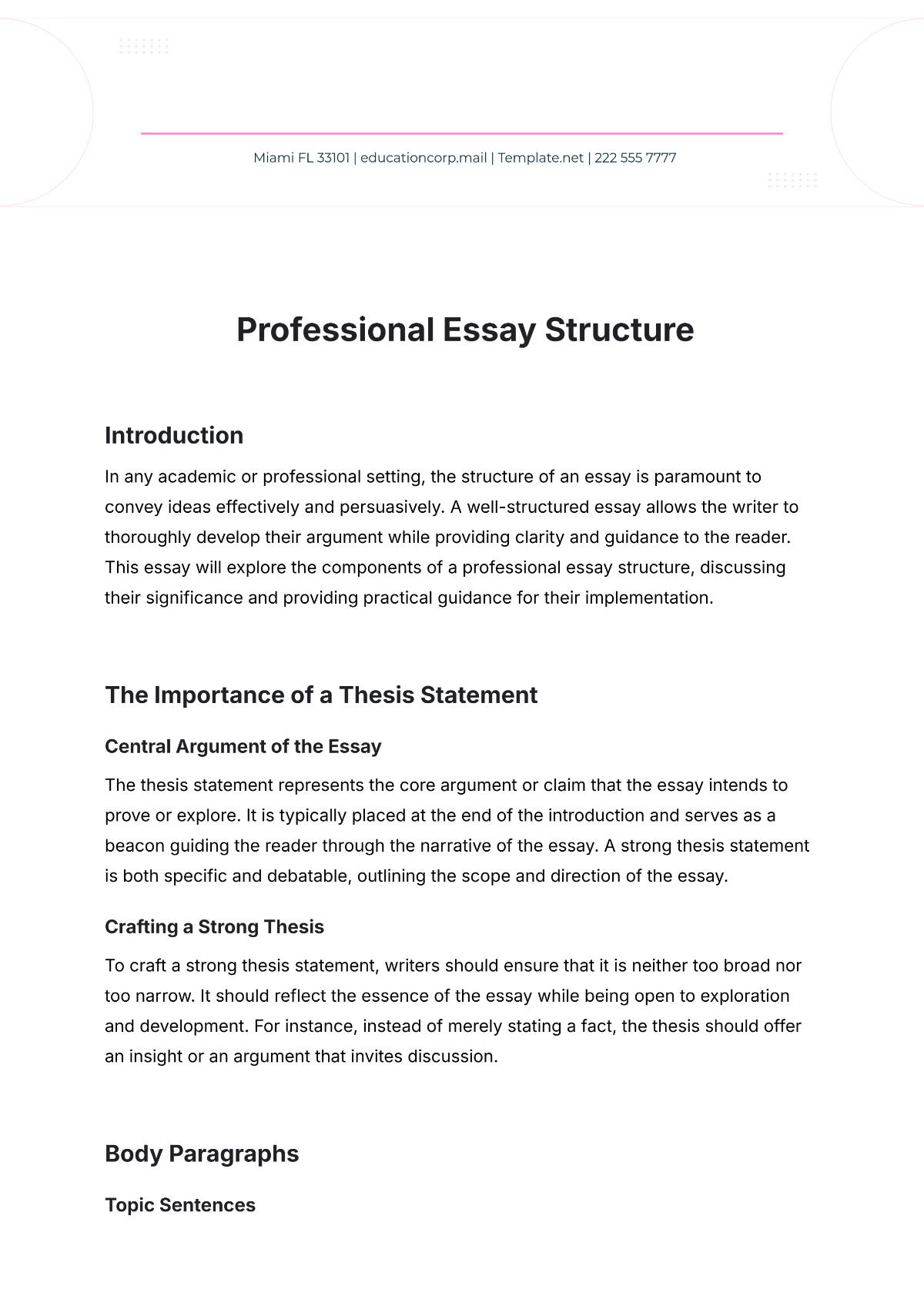
Introduction
In any academic or professional setting, the structure of an essay is paramount to convey ideas effectively and persuasively. A well-structured essay allows the writer to thoroughly develop their argument while providing clarity and guidance to the reader. This essay will explore the components of a professional essay structure, discussing their significance and providing practical guidance for their implementation.
The Importance of a Thesis Statement
Central Argument of the Essay
The thesis statement represents the core argument or claim that the essay intends to prove or explore. It is typically placed at the end of the introduction and serves as a beacon guiding the reader through the narrative of the essay. A strong thesis statement is both specific and debatable, outlining the scope and direction of the essay.
Crafting a Strong Thesis
To craft a strong thesis statement, writers should ensure that it is neither too broad nor too narrow. It should reflect the essence of the essay while being open to exploration and development. For instance, instead of merely stating a fact, the thesis should offer an insight or an argument that invites discussion.
Body Paragraphs
Topic Sentences
Each body paragraph should begin with a topic sentence that clearly indicates the main point of the paragraph. The topic sentence acts as a mini-thesis for the paragraph, setting the tone and informing the reader of the paragraph's focus.
Evidence and Analysis
A key component of each paragraph is the evidence that supports the argument. This evidence can take the form of data, quotations, or well-researched facts. Following the presentation of evidence, analysis is crucial. The writer should explain how the evidence supports the thesis statement, highlighting its relevance and implications.
Cohesion and Transition
For an essay to flow seamlessly, coherence between paragraphs and ideas is vital. Writers should use transitions to guide the reader from one paragraph to the next, ensuring that the argument develops logically and naturally. These transitions can be explicit, such as using conjunctive adverbs, or implicit, by establishing connections in the analyses.
Conclusion
Restating the Thesis
The conclusion serves as a reflection and synthesis of the main points discussed in the essay. It should begin by restating the thesis, albeit in a rephrased manner, reinforcing the central argument of the essay.
Summarizing Key Points
The writer should then summarize the key points discussed, highlighting the evidence and analyses that support the thesis. This summary should tie together the various strands of the argument, providing a unified view of the topic.
Closing Remarks and Implications
A strong conclusion goes beyond mere summary; it also offers closing remarks on the broader implications of the argument. It may suggest avenues for further research or address the significance of the findings in a wider context. This closing perspective leaves the reader with a lasting impression and a deeper understanding of the topic.
Conclusion
Mastering the structure of a professional essay requires careful consideration of the introduction, body paragraphs, and conclusion. Each component plays a pivotal role in constructing a coherent and compelling argument that engages and persuades the reader. By adhering to a professional essay structure, writers can communicate their ideas with clarity and precision, making a significant impact in academic and professional arenas.
Author: [YOUR NAME]
Date Published: January 1, 2055
- 100% Customizable, free editor
- Access 1 Million+ Templates, photo’s & graphics
- Download or share as a template
- Click and replace photos, graphics, text, backgrounds
- Resize, crop, AI write & more
- Access advanced editor
Unlock clear, organized essays with Template.net’s Professional Essay Structure Template! This fully customizable and editable tool, enhanced with an AI Editable Tool, simplifies structuring essays for any topic. Perfect for students and professionals, it ensures coherent, logical writing, saving time while boosting quality. Effortlessly create polished essays with this user-friendly, adaptable template.
